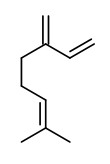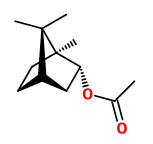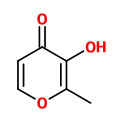Dies ist eine alte Version des Dokuments!
Pinus sylvestris L. - syn.Pinus nigra Mill. - Pinaceae - Scots pine, Gemeine Kiefer, Wald-Kiefer, Waldföhre, Rotföhre
Evergreen tree, native from Central Europe to Siberia.
„The four most abundant monoterpenes usually emitted from Pinus sylvestris were α-pinene, 3-carene, camphene, and β-pinene. Emissions of individual monoterpenes were highly correlated to each other and increased exponentially with temperature.“
[Monoterpene emissions from Scots pine (Pinus sylvestris): Field studies of emission rate variabilities. Komenda, M., Koppmann, R. (2002). Journal of Geophysical Research: Atmospheres (1984–2012), 107(D13), ACH-1.]
„Influence of season on the terpene composition of Pinus halepensis and Pinus sylvestris was investigated. The essential oil of twigs and needles from a preselected plot of pines was investigated from October to June… In P. sylvestris, the average composition was 49.2% α-pinene, 30.1% sabinene, 14.9% β-pinene and 7.9% limonene in the essential oil of twigs; 69.5% α-pinene, 14.9% camphene, 9.1% β-pinene, 3.6% sabinene and 2.8% limonene in the essential oil of needles. The maximum amount of sabinene coincides with the minimum of α-pinene, both in twigs and needles essential oil from P. halepensis and P. sylvestris. The month-to-month changes in the oil composition are statistically significant for the most part. It is of interest to point out the decrease of sabinene content of needles essential oil in comparison with the twigs essential oil, with the simultaneous increase of terpinolene in P. halepensis and camphene in P. sylvestris.“
[Seasonal variations in the composition of Pinus halepensis and Pinus sylvestris twigs and needles essential oil., Zafra, M., Garcia-Peregrin, E., The Journal of Agricultural Science, Vol.86(01), 1976, 1-6]
„Conifers produce the greatest amounts of terpenes among all plant families. In P.sylvestris the heart wood contains 8% resin consisting of 25% monoterpenes.“ The six major monoterpenes found in oeloresin samples of Swedish P.sylvestris populations were α-pinene (8-15%), β-pinene (5-24%), δ-3-carene (23-54%), myrcene (2-20%), limonene (3-14%), and β-phellandrene (7-23%).
[Geographical variation in the relative proportion of monoterpenes in cortical oleoresin of Pinus sylvestris in Sweden., Yazdani, R., Nilsson, J.E., Ericsson, T., Silvae Genetica, 34(6), 201-207, 1985] http://www.allgemeineforstundjagdzeitung.com/fileadmin/content/dokument/archiv/silvaegenetica/34_1985/34-6-201.pdf
„Oils of Pinus sylvestris L. produced from plant material collected from different locations in Lithuania have been investigated by GC and GC/MS. The oil content in many samples was approximately 1 mL/100 g (dry weight) with few exceptions when it was slightly higher or lower. More than 70 constituents were identified (64 positively and 10 tentatively) in the oils. α-Pinene (18.5-33.0%) and δ-3-carene (9.1-24.6%) were dominating constituents with the only one exception when the germacrene-4-ol content in one of the samples was 13.2%. The important bornyl acetate content varied from 0.5% to 3.0%. The main sesquiterpenes were β-caryophyllene, germacrene D, bicyclogermacrene, δ-cadinene, γ-cadinene, germacrene D-4-ol, cubenol (2.0-5.1%) and α-cadinol (1.9-7.7%).“
[Composition of essential oils of Pinus sylvestris L. from different locations of Lithuania. Venskutonis, P. R., Vyskupaityte, K., Plausinaitis, R., Journal of Essential Oil Research, Vol.12(5), 2000, 559-565]
„…the distinctive odor is due to esters, mainly (-)-bornyl acetate… Turpentine oil and needle oils are antiseptic and secretolytic.“
[Medicinal Plants of the World. Ben-Erik Van Wyk and Michael Wink, Pretoria 2004, 242]
Needles of Pinus spec. contain glycosidically bound maltol, which is cleaved during the drying of the needles on the forest floor, contributing to the characteristic note present in European (pine) forests warmed by the sun.
[Meaningful Scents around the World, R.Kaiser, 2006, 38]
Main components of turpentine oil, obtained by hydrodistillation of oleoresin of Pinus sylvestris collected from Pinus sylvestris from Turkey were α-pinene (34.9-43.6%), β-pinene (17.0-29.4%), ∆3-carene (6.5-9.6%), camphene (1.0-2.2%), limonene (1.7-2.0%), longifolene (4.3-9.5%), and β-caryophyllene (1.1-1.6%).
[Tümen, İbrahim, and Markku Reunanen. „A comparative study on turpentine oils of oleoresins of Pinus sylvestris L. from three districts of Denizli.“ Records of Natural Products 4.4 (2010): 224-229] http://acgpubs.org/RNP/2010/Volume%204/Issue%201/27-RNP-1008-297.pdf
To elucidate the smell of pine wood, solvent-assisted flavour evaporation (SAFE) of volatiles from pine wood shavings followed by dedicated odorant analysis techniques such as gas chromatography-olfactometry (GC-O) and aroma extract dilution analysis (AEDA) was applied. Of 44 odour-active compounds, 39 were identified by two-dimensional gas chromatography-mass spectrometry/olfactometry (2D-GC-MS/O). The majority of the identified odorants were fatty acid degradation products, plus some terpenoic substances and odorous substances resulting from the degradation of lignin. Highest flavour dilution factors (FD>=243) showed α-pinene (woody resinous), hexanal (green grassy), octanal (citrus), (E)-non-2-enal (fatty), linalool (citrus), (E)-dec-2-enal (fatty), (E,E)-nona-2,4-dienal (fatty), pentanoic acid (cheesy), (E,E)-deca-2,4-dienal (fatty), heptanoic acid (pepperoni-like, plastic), δ-octalactone (coconut), γ-nonalactone (peach), (E,Z,Z)-trideca-2,4,7-trienal (fruity blood-like metallic), δ-nonalactone (sweet coconut), nonanoic acid (leather artificial soapy), sotolone (savoury), α-bisabolol (balsamic pepper-like), phenylacetic acid (honey-like), vanillin (vanilla-like), 3-phenylpropanoic acid (vomit-like fruity), an unidentified androstenone-like substance (perfume-like) and thymoquinone (pencil-like).
[Schreiner, L., Bauer, P., & Buettner, A. (2018). Resolving the smell of wood-identification of odour-active compounds in Scots pine (Pinus sylvestris L.). Scientific reports, 8(1), 8294]
https://www.nature.com/articles/s41598-018-26626-8
Using stable isotope dilution analysis (SIDA) and odor activity values (OAVs) calculated on the basis of odor thresholds determined in cellulose, hexanal, octanal, (E)-non-2-enal, p-cresol, vanillin, and thymoquinone were the dominant odorants for wood odor of several softwood species (Pinus sylvestris, Larix decidua, Calocedrus decurrens, Abies concolor, and Picea abies).
[Schreiner, Linda, Eva Ortner, and Andrea Buettner. „Nosy confirmation: reconstitution of the characteristic odor of softwood via quantitative analysis and human sensory evaluation.“ Analytical and Bioanalytical Chemistry (2019): 1-13]

Masclef, A., Atlas des plantes de France, vol.3 t.393
http://plantgenera.org/species.php?id_species=795230
Pinus sylvestris subsp. sylvestris
© Rolf Marschner (2009),
www.botanische-spaziergaenge.at








